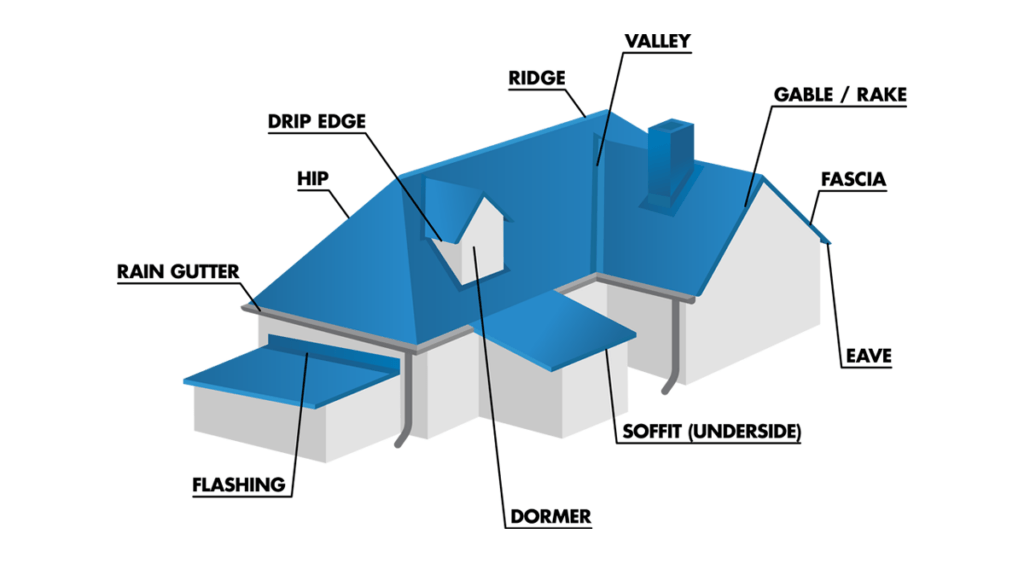When considering a metal roof for your home, understanding the terminology associated with this type of roofing system is essential. Understanding metal roof terminology aids in making informed decisions and effectively communicating with roofing professionals about metal types, components, and installation techniques. In this article, we will provide a comprehensive guide to metal roof terminology to empower homeowners with the knowledge they need.

Metal Roof Types:
1.1 Standing Seam: Standing seam is a popular type of metal roof characterized by vertical metal panels with raised seams that interlock together. This design provides enhanced durability, weather resistance, and a clean, sleek appearance.
1.2 Corrugated Metal: Corrugated metal roofs have repeating waves, providing strength, rigidity, and effective water shedding. Agricultural, industrial, and residential buildings commonly utilize them.
1.3 Metal Shingles: Metal shingles mimic the look of asphalt shingles or clay tiles while providing the durability and longevity of metal. They are available in various styles and finishes, providing versatility and aesthetic appeal.
Metal Roof Components:
2.1 Underlayment: The underlayment is a waterproof layer installed beneath the metal roof panels. It provides an additional barrier against water infiltration and helps protect the roof structure from moisture damage.
2.2 Flashing: Flashing refers to the metal pieces used to create watertight seals around roof penetrations such as chimneys, skylights, and vents. It prevents water from entering vulnerable areas and plays a crucial role in maintaining a leak-free roof.
2.3 Ridge Vent: An exhaust vent installation occurs at the peak of a metal roof, where a ridge vent allows hot air to escape from the attic or upper living space. It promotes proper ventilation, preventing moisture buildup and extending the lifespan of the roof.
Metal Roof Installation Techniques:
3.1 Clip Fastening: Clip fastening is a method of attaching metal roof panels to the roof deck using specially designed clips. This technique allows for thermal expansion and contraction of the metal while providing secure and stable attachment.
3.2 Concealed Fastening: Concealed fastening involves securing metal roof panels from underneath, hiding the fasteners from view. This method provides a clean and seamless appearance while offering enhanced protection against leaks and wind uplift.
3.3 Direct Screw Fastening: Direct screw fastening attaches metal roof panels to the roof deck using screws. This method finds common usage for installing corrugated metal roofs, offering a secure and cost-effective installation option.
Conclusion: Enhancing Your Metal Roofing Knowledge
Understanding metal roof terminology is vital for homeowners considering this durable and versatile roofing option. Get familiar with metal roof types, components, and installation techniques for confident communication, informed decisions, and successful installation and maintenance.
Remember to consult with reputable roofing contractors for personalized advice and guidance tailored to your specific needs. They provide expert guidance in selecting suitable metal roof types, components, and installation techniques for your home.



Leave a Reply